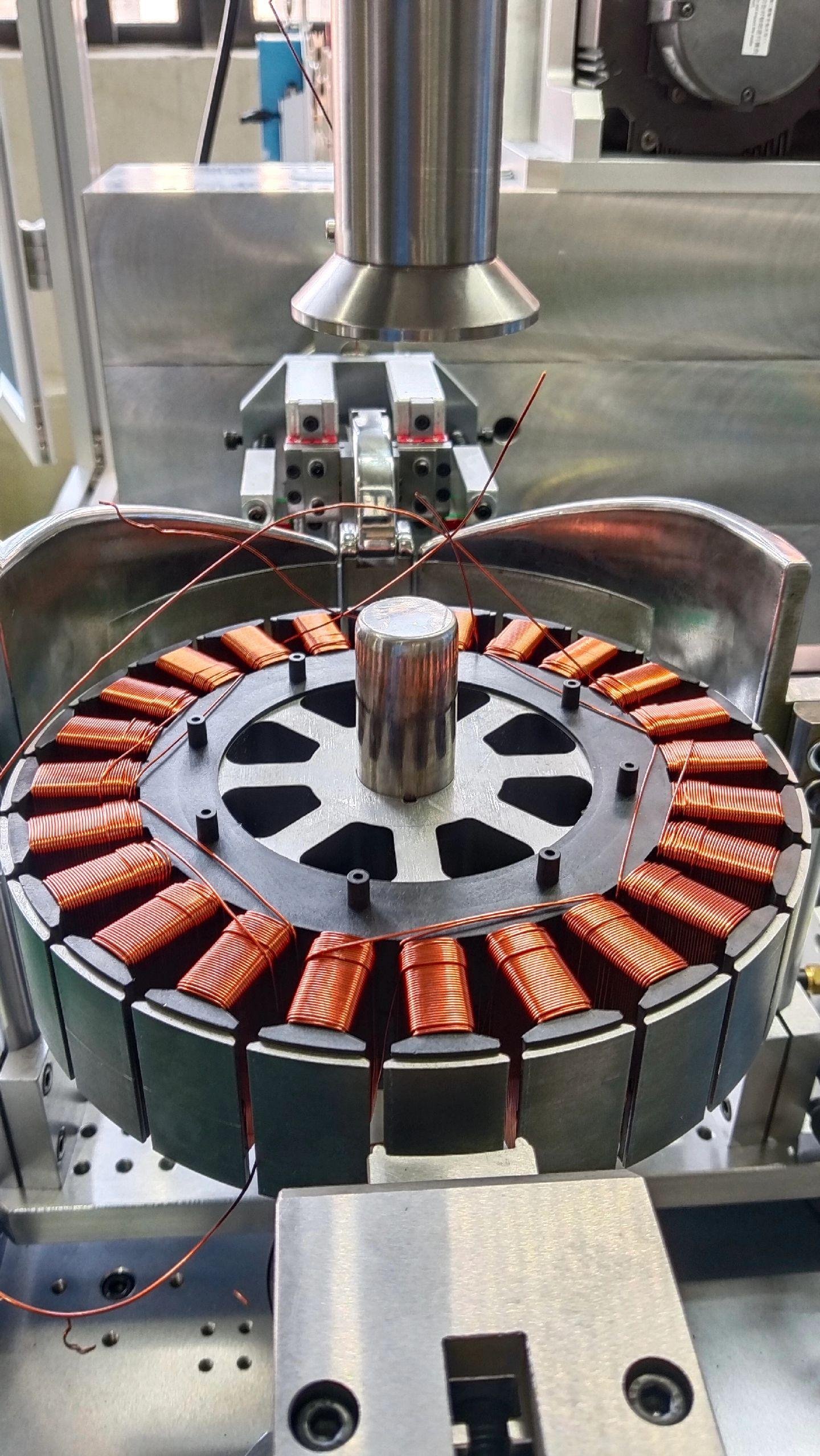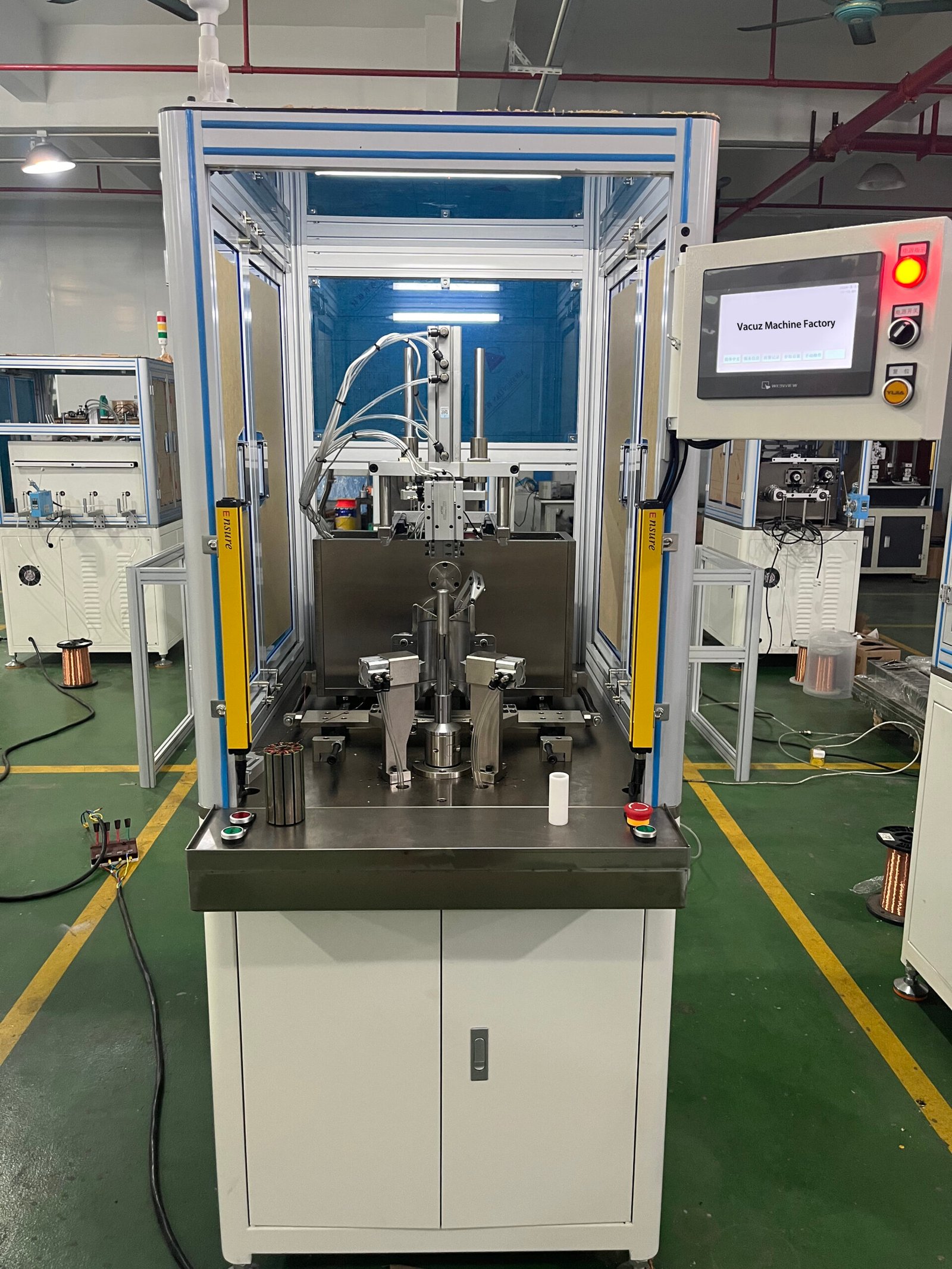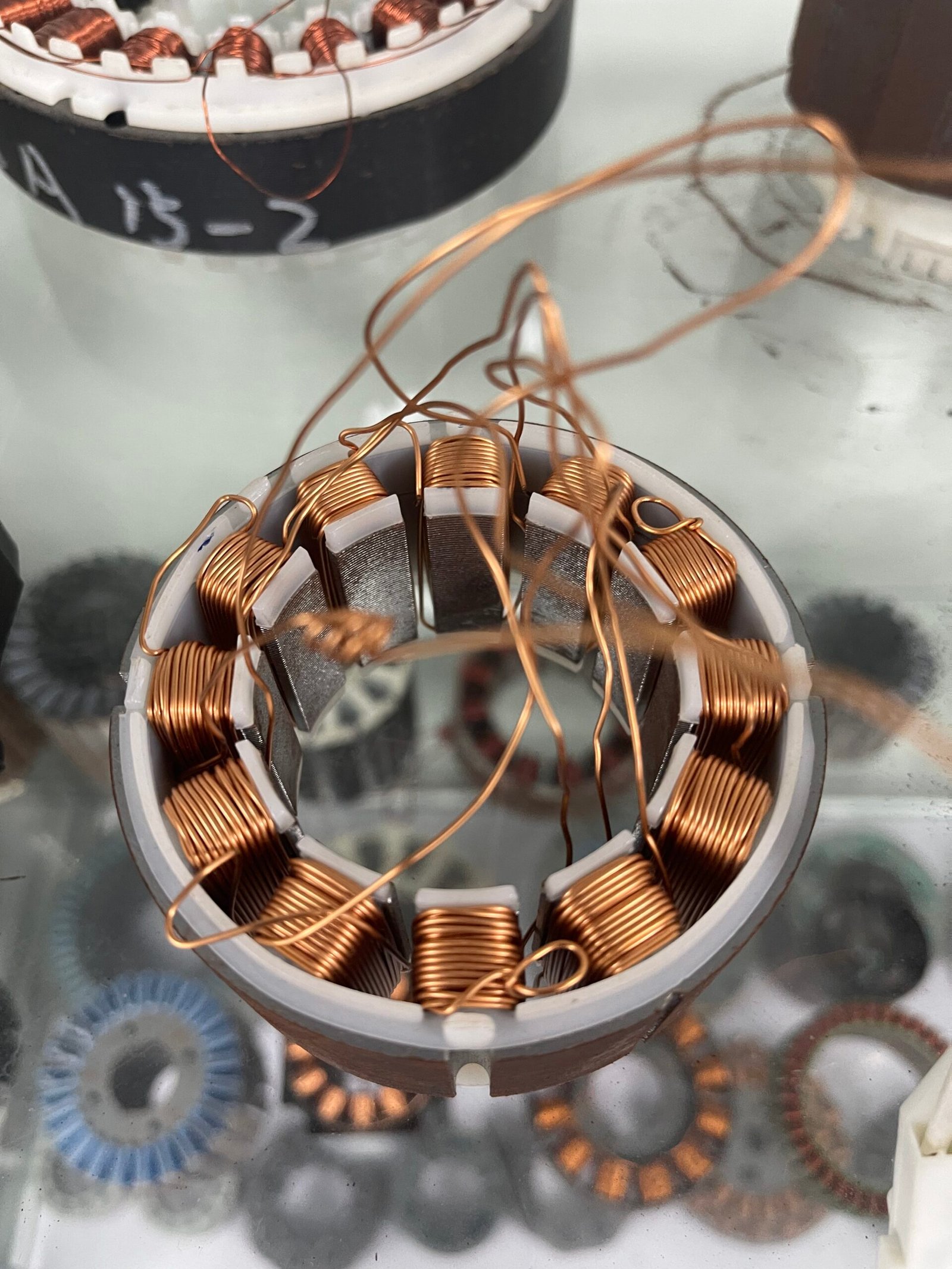The price of a motor stator winding machine varies depending on the product. Generally speaking, many factors influence price. So, what factors influence the price of a motor stator winding machine? What are the requirements for winding machine manufacturers? Vacuz will briefly explain these factors below!

I. Factors Affecting the Price of a Motor Stator Winding Machine:
1. Equipment Performance and Specifications:
Winding Accuracy and Speed: High-precision winding machines require advanced manufacturing processes and materials, while high-speed winding machines require a powerful drive system and optimized mechanical structure. These factors increase costs. For example, equipment that supports micron-level winding accuracy may cost 30%-50% more than standard equipment.
Scope of Application: Equipment that supports winding stators with multiple specifications requires greater flexibility and adjustability, which typically means a more complex mechanical structure and control system, resulting in a corresponding increase in price. For example, equipment that supports wire diameters from 0.5mm to 3mm may cost 20% more than equipment for a single specification.
Level of Automation: Fully automatic equipment integrates advanced sensors, actuators, and control systems to automate the entire process, from winding to trimming and reversing, resulting in a significantly higher cost. For example, equipment equipped with a PLC control system may cost 50%-100% more than manual equipment.
2. Technology Content:
Control Systems: Equipment using PLC or industrial computers offers higher levels of intelligence and automation, enabling more complex control logic and algorithms, but also comes with higher costs. For example, equipment supporting remote monitoring and fault diagnosis may cost 40% more than basic equipment.
Sensor and Detection Systems: Equipment equipped with real-time monitoring features such as tension sensors and position sensors can monitor various parameters during the winding process to ensure quality and stability, but this also increases costs. For example, equipment equipped with laser ranging sensors may cost 25% more than standard equipment.
Additional Features: Additional features such as automatic counting, fault diagnosis, and remote monitoring can further enhance equipment intelligence and production efficiency, but also increase costs. For example, equipment supporting automatic counting may cost 15% more than basic equipment.
3. Brand and Market Positioning:
Brand Premium: Well-known brands typically have a long history, extensive technical expertise, and a strong market reputation. These factors give them higher brand value in the market, leading to a correspondingly higher price.
Market Positioning: High-end equipment targets customers with high demands for product quality and precision, such as those in precision manufacturing. Therefore, these devices utilize more advanced technologies and materials in their design and manufacturing, leading to higher prices. Mid- and low-end equipment, on the other hand, prioritizes cost-effectiveness and meets the needs of general customers. For example, the price of high-end equipment may be two to three times that of mid- and low-end equipment.
4. Production Batch and Customization:
Production Batch: Standardized equipment produced in large batches can reduce costs through economies of scale, resulting in lower prices. However, small batches or customized equipment, due to the high R&D and commissioning costs, can also lead to higher prices. For example, customized equipment can be 50%-100% more expensive than standardized equipment.
Customization: Equipment customized to specific customer needs requires more R&D and design resources, resulting in significantly higher prices than standard models. For example, the price of a customized device can be 80%-150% higher than a standard model.
5. After-Sales Service and Warranty Period:
Warranty Period: A longer warranty period means the manufacturer assumes more responsibility for after-sales service, which can increase the price of the equipment accordingly. Equipment with a three-year warranty may cost 10%-20% more than equipment with a one-year warranty.
After-sales service: Manufacturers that offer quick response, on-site repairs, and spare parts supply can ensure stable operation and timely repairs, but this also increases operating costs, resulting in higher equipment prices. Manufacturers offering 24-hour quick response service may charge 15%-25% more than regular manufacturers.
II. Requirements for Winding Machine Manufacturers:
1. Product Quality:
Manufacturers should have strict quality control processes to ensure stable and reliable product performance. Products should undergo rigorous quality inspections to ensure winding accuracy and consistency.
2. Technical Strength:
Manufacturers should have a professional technical team and R&D capabilities to provide professional technical support and after-sales service. Manufacturers with multiple senior engineers and R&D personnel are considered to have stronger technical strength.
Manufacturers should continuously invest in R&D to optimize equipment performance and improve winding speed, accuracy, and stability. Manufacturers that invest at least 5% of their annual sales revenue in R&D have more advanced equipment.
3. Production Capacity:
The manufacturer should possess advanced processing equipment and production lines, such as CNC lathes and CNC machining centers, to ensure industry-leading precision and lifespan of mechanical parts.
The manufacturer should have comprehensive assembly processes and quality control systems to ensure the stability and reliability of the equipment’s overall structure. Manufacturers that utilize automated assembly lines can achieve even higher assembly quality.
4. After-Sales Service:
The manufacturer should provide comprehensive after-sales service, including equipment installation and commissioning, operator training, troubleshooting, and spare parts supply, to ensure timely and effective support throughout the entire process.
The manufacturer should establish a rapid response mechanism, such as a 24-hour hotline and 48-hour on-site repair service, to ensure prompt resolution of user issues.
5. Reputation and Reputation:
The manufacturer should have a strong reputation within the industry and a wealth of customer references, providing users with successful application case studies.
6. Customization Capabilities:
The manufacturer should determine the equipment’s configuration parameters based on the specific characteristics of its products (such as stator size, wire diameter range, winding accuracy requirements, etc.) to avoid wasting resources due to over-configuration.
Manufacturers should be able to provide customized solutions, tailoring equipment to meet specific user requirements and individual production needs. Manufacturers that can offer non-standard customization services are more competitive in the market.

What factors influence the price of motor stator winding machines? What are the requirements for winding machine manufacturers? Vacuz has provided a brief explanation above, and we hope this information is helpful!
Email: sales@vacuz.com [fusion_form form_post_id="431″ margin_top="" margin_right="" margin_bottom="" margin_left="" hide_on_mobile="small-visibility,medium-visibility,large-visibility" class="" id=""][/fusion_form]

